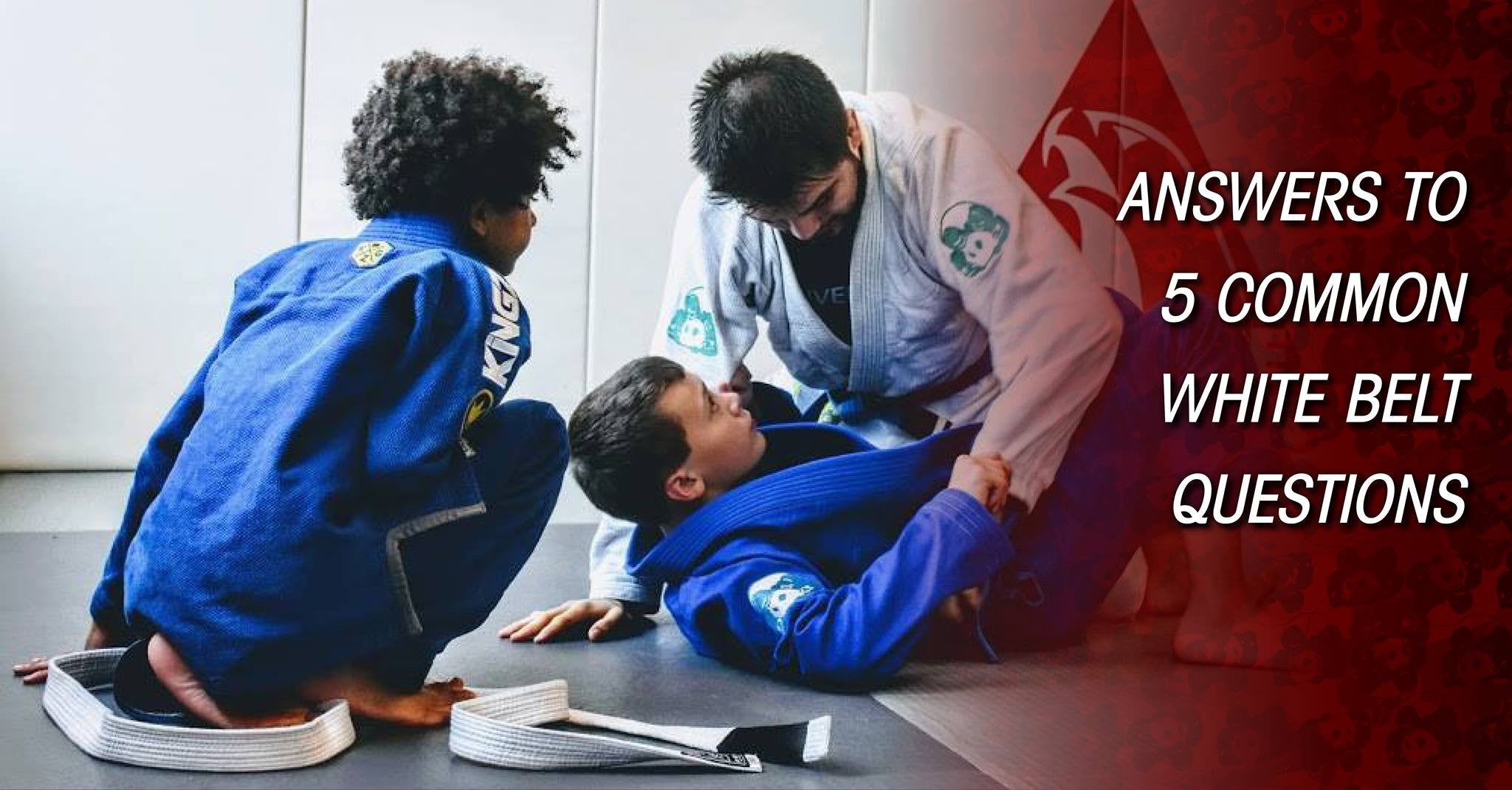Answers to 5 Common White Belt Questions

Starting Brazilian Jiu-Jitsu can be a bewildering and socially awkward experience. You are dropped into a new culture with all its own rules and traditions. To ease some of that tension, I have written answers to a few of the most common questions that beginners ask.
Does it matter what color gi I buy?
Check your school’s rules, but a white gi is always a safe bet. Blue is normally fine too. Black is probably OK but some new students worry it will draw too much attention.
The reasons to check with your school first are that some require white gis or require you to buy a school gi. More liberal BJJ associations like the BJJ Globetrotters allow everyone to wear whatever colors and patches they like.
Do I have to wear a rashguard under my gi?
Again, check if your school has rules about this, but usually it’s not required, though wearing one is much more common these days and I recommend it.
Back when I started BJJ, men went bare chested and women wore sports bras and t-shirts under their jackets. Somewhere along the line it became popular to wear rashguards instead. Having had my face pressed in many a hairy man’s chest, this is a trend I fully support.
How do I remember everything I’m being shown?
I have yet to find a better way to remember techniques than writing a training journal. Keeping a detailed journal can be difficult at first because a single class can be overwhelming, but your recall will get better with practice.
How do I deal with feeling so sore after training?
Nothing will prevent you from feeling some soreness, but these can help:
- Good sleep.
- Drinking plenty of water.
- Eating healthy.
- Taking a day or two off to rest.
- Stretching and foam rolling.
- Massage.
In the long run, your body will adapt in many ways that lessen the soreness. You should start a habit of working on your mobility and strength now to guard against the more serious injuries that BJJ athletes are prone to.
How soon before training should I eat?
You know your body and its quirks better than me, but I recommend you eat something healthy about an hour before class. Give yourself enough time to not feel it sitting in your stomach when you start bouncing and rolling around.
Good choices for snacks are oatmeal, granola, peanut butter, whole grain bread, fruit, and nuts. If you are on some kind of diet or bodybuilding plan where those foods are not recommended, then this question and answer was not for you.
---
If you still have more questions you’re afraid to ask, put them in the comments below and I’ll work them into the next installment. Thanks for reading!
Other articles:
Quick links
Contact us
About us
Quality BJJ gear at fair prices, available all year. Founded in 2012 to provide an alternative to high-cost, limited edition gis. Dive into the BJJ lifestyle with us—join the Panda Nation!"
